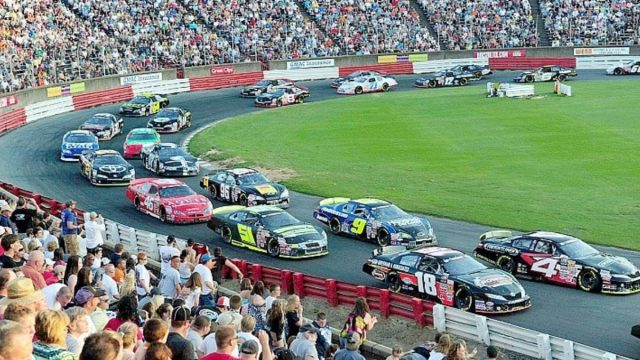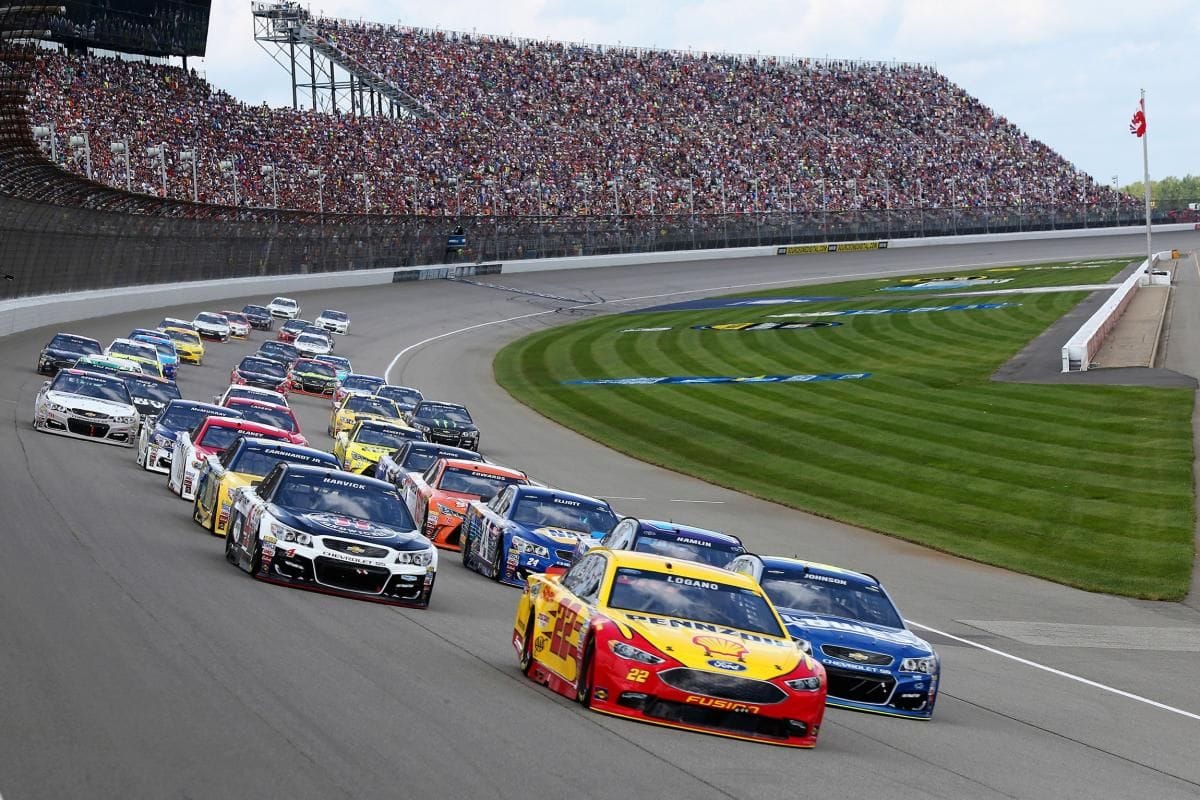NASCAR’s Clash Hits Bowman Gray: NASCAR’s Clash at Bowman Gray Stadium offers a unique opportunity to investigate the intricacies of short track racing, particularly within the context of the Next Gen car’s performance. This historic venue, affectionately dubbed ‘The Madhouse,’ stands out due to its tight confines and fervent fan engagement, presenting both challenges and advantages for drivers. As we analyze the implications of this event on the broader landscape of NASCAR, one must consider how the track’s distinctive characteristics might influence racing dynamics and strategies moving forward. What lessons could be learned from this iconic setting that may reshape the future of the sport?
Key Highlights
- Bowman Gray Stadium, established in 1937, is NASCAR’s longest-running weekly track, rich in history and tradition.
- Known as ‘The Madhouse,’ the venue’s unique layout presents distinct challenges compared to larger tracks.
- The stadium’s passionate fanbase creates an electric atmosphere, enhancing the overall racing experience.
- The Clash serves as a testing ground for vehicle performance and race strategies under varied conditions.
- The demanding nature of Bowman Gray allows for rigorous evaluations of the Next Gen car’s handling and capabilities.
NASCAR’s Short Track Experimentation and Results
NASCAR’s ongoing experimentation with short track racing has become a focal point since the introduction of the Next Gen car in 2022. This renewed emphasis on short tracks reflects the series’ commitment to enhancing competition and driving fan engagement. A crucial aspect of this initiative has been the introduction of a new aerodynamic package, including a simplified diffuser design, aimed at improving car handling during close racing conditions. The intention was to facilitate overtaking opportunities, particularly for faster vehicles maneuvering through slower competitors.
However, the results from these experiments have been disappointing. Following the Richmond race, where the new diffuser was put to the test, it became apparent that the anticipated improvements in performance did not materialize. The modifications failed to considerably alter the dynamics of close racing, leaving teams and fans similarly questioning the efficacy of these changes. This outcome raises critical questions about the balance between innovation and tradition in NASCAR‘s approach to short track racing.
The challenges associated with short track competition are multifaceted, including not only aerodynamic considerations but also tire performance and driver skill. While the Next Gen car was designed to level the playing field, the results of the recent aerodynamic experiments exemplify the complexities inherent in achieving that goal.
As NASCAR continues to refine its strategies, the series must remain vigilant in evaluating the effectiveness of its innovations, ensuring that short tracks remain a cornerstone of competitive excitement in the sport.
NASCAR’s Latest Short Track Experiment: The Clash at Bowman Gray Stadium
The Clash at Bowman Gray Stadium represents a remarkable step in NASCAR’s ongoing efforts to refine its short track racing package. This iconic venue, often referred to as ‘The Madhouse’, will host the Cup Series for the initial time since 1971, marking a considerable return to a track steeped in racing history.
The decision to utilize Bowman Gray for this experiment highlights NASCAR’s commitment to exploring new dimensions in its racing format, particularly in the context of short track dynamics.
Bowman Gray’s unique layout and tight confines are expected to challenge drivers in ways that larger tracks do not. This experiment provides NASCAR with an opportunity to analyze how its vehicles perform under different conditions and configurations, promoting a deeper understanding of short track racing mechanics.
With the inherent unpredictability of short tracks, the Clash serves as a laboratory for evaluating race strategies, vehicle setups, and fan engagement.
Efforts to Improve Short Track Racing
Efforts to improve competitiveness in short track racing have become a focal point for NASCAR as it seeks to energize fan interest and raise the on-track product. One of the most notable initiatives has been the collaboration with Goodyear to test new tire compounds at venues such as Richmond Raceway. This experiment introduced two distinct tire types: the faster yet less durable “option” tire and the more consistent but slower “prime” tire. Teams were provided with six sets of option tires and two sets of prime tires, necessitating tactical decision-making that could greatly influence race outcomes.
“It was (intriguing) for sure, I found it very interesting, watching the race back, there was an element of it for sure.” -(hamlin)
Denny Hamlin, a prominent NASCAR driver, remarked on the intrigue generated by this tire strategy, acknowledging that it added a layer of excitement to the race. However, he also pointed out issues with the tire quality, noting instances where teams received outdated tires, which can be critical in determining race results. This highlights the fine line between innovation and execution in NASCAR’s quest to improve short track racing.
While these tire experiments are still in their infancy, they denote a proactive approach to refining the racing experience. NASCAR is in the process of gathering data and feedback from these tests, with future applications anticipated in upcoming short track events, such as the playoffs at Bristol.
As NASCAR continues to refine its tactics, the focus remains on fostering a competitive environment that not only captivates fans but also challenges drivers in new and engaging ways.
Bowman Gray Stadium: A Historic Testing Ground
Bowman Gray Stadium (BGS) stands as a symbol of the rich history of stock car racing, offering a unique blend of tradition and innovation. Established in 1937, BGS is NASCAR’s longest-running weekly track since 1949, the same year the NASCAR Cup Series began. This storied venue is not just a backdrop for racing; it is a notable place that has shaped the very core of the sport, producing numerous legendary drivers who have defined NASCAR.
As a historic testing ground, BGS provides an unmatched environment for both cars and drivers. The demanding nature of the track challenges competitors to push their limits, making it an ideal location for rigorous testing. Remarkably, the Next-gen car underwent evaluations here before its debut at the 2022 Clash, highlighting BGS’s role in refining vehicle performance and technology.
The data gleaned from racing at such an intense venue is invaluable, offering insights that can greatly influence tactical decisions in vehicle design and race execution.
Moreover, the electric atmosphere generated by passionate fans improves the racing experience, further motivating drivers to excel. For emerging talents, BGS serves as a crucial training ground, allowing them to hone critical skills such as car control and aggressive racing tactics.
The forthcoming Clash on February 2, 2025, promises to rekindle excitement for short-track racing, reinforcing BGS’s legacy as a key player in the evolution of NASCAR.
Debate Over Increasing Horsepower
In the world of stock car racing, the pursuit of excitement often hinges on the balance of power beneath the hood. This has sparked an ongoing debate within the NASCAR community regarding the potential increase of horsepower in race cars, particularly on short tracks like Bowman Gray. Many drivers and fans advocate for this improvement, believing that more horsepower could lead to thrilling overtakes and tighter racing, thereby elevating the complete spectacle.
NASCAR champion Joey Logano succinctly encapsulates this sentiment by stating, “We want more power… It’s more bada*s.” His perspective is echoed by veteran Kevin Harvick, who suggests that a return to horsepower levels exceeding 1,000 could energize the competition.
However, NASCAR remains cautious, emphasizing the high cost-to-success ratio associated with such a change. John Probst, NASCAR’s Chief Racing Development Officer, states this skepticism, arguing that increasing horsepower could unknowingly lead to cars running further apart, thereby diminishing the very excitement it aims to improve.
“If you add the horsepower, you add the cost, then you see if it is better. There’s no guarantee you get there, and it would be any better. And I think there’s some evidence that shows as we add horsepower, they run further apart.” -(probst)
This hesitance is compounded by financial considerations; the potential expenses tied to an increase in horsepower necessitate a careful evaluation of the current charter debate and its implications for team funding.
While the desire for more power is visible, the question remains: can NASCAR find a feasible path forward that balances cost, safety, and competitive integrity? Engaging the community in this discussion may uncover creative solutions that not only amplify the thrill of racing but also guarantee its sustainability.
News in Brief: NASCAR’s Clash Hits Bowman Gray
The Clash at Bowman Gray Stadium presents NASCAR’s commitment to enhancing short track racing through groundbreaking experimentation with the Next Gen car. As a historic venue, Bowman Gray presents unique challenges that test driver skill and strategy, fostering an electrifying atmosphere for fans.
Ongoing debates regarding horsepower adjustments reflect the sport’s dedication to evolving competitive dynamics. Ultimately, this event serves as a crucial platform for evaluating performance and refining the future of short track racing within NASCAR.
ALSO READ: Veteran Journalist Slams NASCAR’s Blind Eye to Fans Amid Michigan Controversy



